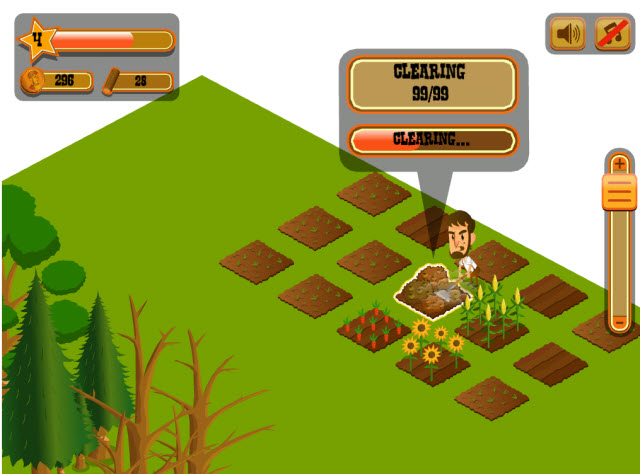
Adobe created a hole in the market when it admitted finally that it will be unable to create a version of its Flash that can run on mobile devices. Sibblingz is stepping into that hole to provide game developers with a platform that enables them to create web and iOS and Android mobile games at the same time.
[aditude-amp id="flyingcarpet" targeting='{"env":"staging","page_type":"article","post_id":353991,"post_type":"story","post_chan":"none","tags":null,"ai":false,"category":"none","all_categories":"dev,games,","session":"D"}']Relan said in an interview that Spaceport 3.0 has been designed to be a drop-in replacement for Flash. For years, Flash ran fine by tapping a computer’s central processing unit (CPU). But in the mobile era, CPUs were too under-powered to run Flash properly. If Adobe had adapted Flash to run on graphics processing units (GPUs), it would have worked fine on mobile devices. But the company never did that.
AI Weekly
The must-read newsletter for AI and Big Data industry written by Khari Johnson, Kyle Wiggers, and Seth Colaner.
Included with VentureBeat Insider and VentureBeat VIP memberships.
Sibblingz allows developers to create their games in a hybrid HTML5/native app format that allows them to be played on any device as efficiently as native apps. Developers can also greatly improve the update process by changing their own Javascript, rather than waiting for a platform owner to approve their updates.
Sibblingz built its game development platform by creating a rendering engine that could run on GPUs. So it works fine on either the PC or mobile devices. It also uses Javascript, which makes it compatible with HTML5, the new lingua franca for cross-platform applications. While many browser-based HTML5 applications run slow because they don’t take advantage of native hardware, Spaceport applications can run fast because they take advantage of the Sibblingz GPU rendering engine, Relan said.
As a result, developers can use Spaceport to create games that run on web sites, on iOS devices, or on Android phones. Relan said the work on this began after Sibblingz shipped Spaceport 2.0 in the spring. After that, developers offered their feedback for what they wanted in version 3.0. After that, Sibblingz created an applications programming interface (API) that mimicked the Flash API, making it a lot easier to take a Flash game and move it over to Sibblingz.
With the compatible API, game creators can still use their familiar Adobe PC content creation tools to create games for the Sibblingz platform. That is one of the main differences between Spaceport 2.0 and Spaceport 3.0. Spaceport 3.0 has a web service that automatically converts Flash animations created with Adobe tools into SWF files using Spaceport’s vector graphics. These are then rendered on iOS or Android devices by the GPU-based rendering engine.
Another key thing is that Sibblingz will now ship a Spaceport app in iOS and the Android Market that will allow developers to test their games on an actual device, rather than on simulation software known as emulators. Developers can convert their ActionScript 3 game code to Javascript translation with Flash-like API libraries in Javascript so the developers can continue to work with familiar APIs.
“Adobe is a great tools company, but they failed to do this for the developer community,” Relan said.
[aditude-amp id="medium1" targeting='{"env":"staging","page_type":"article","post_id":353991,"post_type":"story","post_chan":"none","tags":null,"ai":false,"category":"none","all_categories":"dev,games,","session":"D"}']
Michael Cai, an analyst at market researcher Interpret, said that game developers are looking for alternatives like Sibblingz because of Adobe’s move.
In a side-by-side comparison, games rendered with Spaceport 3.0 run visibly faster on Android, compared to rendering via a Flash mobile plug-in. (See the video below for a comparison). Developers can use Spaceport with no upfront fees.
YouWeb has an interesting position in the mobile game market, since it has created both iSwifter and Sibblingz. iSwifter enables developers who continue to create PC flash games to get those games to run on iOS tablets via streaming technology. Sibblingz, meanwhile, lets game companies migrate from Flash to Spaceport.
Rivals include pure HTML5, which is slow and may be a couple of years away from having enough performance to run fast-moving games. Sibblingz is being used by CrowdStar and a couple of other game companies now.
[aditude-amp id="medium2" targeting='{"env":"staging","page_type":"article","post_id":353991,"post_type":"story","post_chan":"none","tags":null,"ai":false,"category":"none","all_categories":"dev,games,","session":"D"}']
VentureBeat's mission is to be a digital town square for technical decision-makers to gain knowledge about transformative enterprise technology and transact. Learn More
